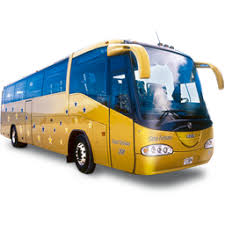
MARCOPOLO Bus Manuals PDF


Marcopolo Bus History
Some MARCOPOLO Bus Service Manuals PDF are above the page.
Founded nearly 60 years ago as a small body atelier, by now Marcopolo S.A. has reached, without exaggeration, outstanding successes in the bus field.
Nowadays Marcopolo S.A. produces more than half of all buses in Brazil and delivers them to 60 countries. In the record 2003, Marcopolo S.A. has produced 14,322 bus bodies. Directly in Brazil, the company has four plants. There are assembly plants in Argentina, Colombia, Mexico, South Africa, Portugal.
It all began in August 1949 when, in Caxias do Sul, Rio Grandidou Sul, a group of eight partners founded a small company that installed bus bodies on the chassis of the hood trucks. The company, which became the forerunner of one of the world's largest bus-building companies, was called Nicola & Cia. Ltda, and only 15 people worked on it.
The first products were wooden bus bodies. However, four years later, in 1953, the company Nicola & Cia. Ltda was the first in Brazil to master the production of bus bodies on a metal frame. In 1954, the first change of name took place - Nicola & Cia. Ltda was renamed Carrocerias Nicola S / A.
Initially, the chassis of imported trucks was used to install bus bodies. The first chassis of the Brazilian production was used in 1957.
By the early 1960s, the annual output of Carrocerias Nicola S / A bodies exceeded two hundred units. Products have even begun to export - the first external market was Uruguay. Then followed the reconstruction of production, which allowed by the end of the 1960s to produce half a thousand buses a year.
In 1971 Carrocerias Nicola S / A again changes its name, acquiring the modern name Marcopolo S.A. An interesting case - the company was named in honor of a very successful model of the bus, called, as it is easy to guess, Marcopolo.
The year of renaming was marked by another event - for the first time in the history of the company, CKD-packages for the assembly of Marcopolo buses outside of Brazil began. The first customer of CKD-kits was Venezuela.
In 1973, the Marcopolo buses were first shown in Europe - in the capital of Belgium, at the same time, partnerships were launched with Cummins and Van Hool. By the end of the 1970s. Marcopolo S.A. already produced all types of passenger transport, turning off articulated buses and trolley buses.
In 1981, Marcopolo S.A. opens a new factory, and in 1983 in the production range there are models whose names have "survived" to date. We are talking about such brands as Viaggio, Paradiso and Strada.
In 1991, Marcopolo S.A. finally consolidated in the European market, opening a factory in the Portuguese city of Coimbra. Today, this enterprise serves the European and African markets, producing models of Viaggio, Tricana and Caribe. In 1995, in the history of Marcopolo S.A. there is one more significant event - in serial production the first in Brazil double-decker bus Marcopolo Paradiso 1800 DD is launched. By the end of the 1990s, the number of buses issued by the company exceeded 100,000. In the same period, Marcopolo S.A. has received the certificate ISO 9001.
The company's current production program is so extensive that we only briefly list the buses produced under the Marcopolo brand. The small class is represented by two models - the 27-seat Fratello and the 30-seat Vicino. In the middle class there are already four bus families - 26-seat Minimax, 27- and 31-seat Senior, 33-seat Temple and 21-seat Listo.
City buses are represented by the families Torino, Viale, Boxer, Citmax and Allegro. The number of executions according to the layout of the cabin and the length variants is enormous - from "singles" to "accordions" and urban "dubble decks."
"Intercity" and "tourists" in the modern production program Marcopolo S.A. fifteen! And these are only "basic" models. If we consider the modifications, then the figure will grow tens of times. These are two- and three-axle high-deck buses, double-decker buses, "simpler-cheaper" buses. In general, for every taste. We list the names of the models: Viaggio 1050, Viaggio II 330, Viaggio II 350, Viaggio II 370, Paradiso 1200, Paradiso 1350, Paradiso 1550 LD, Paradiso 1800 DD, Allegro, Allegro K, Allegro SE, Andare Class, Multego.
Each model can have several variants of a saloon configuration and be based on different chassis. Given these factors, the number of executions is simply "off scale." The suppliers of the Marcopolo bus chassis are companies such as Agrale, Mercedes-Benz, Volkswagen, Chevrolet, Mitsubishi, Nissan, Isuzu, Hyundai, Hino, Irisbus, Scania and Volvo.
